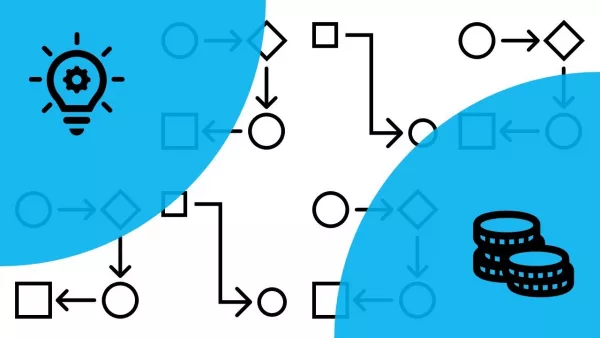
Reduce process costs with BPM
How can a reduction in process costs – as an elementary issue in business relationships – be achieved by optimizing processes?
Moreby Kevin Lang
Process management often sounds complicated. But at its core, it's about making business processes understandable, efficient, and measurable. A key tool for this is the process map. But what exactly is it and why is it so useful?
A process map is a map of a company's business processes. Instead of street names or cities, it shows the processes of a company. It provides a clear overview of all business processes and shows at a glance how they are connected and in which areas they are used.
You could say that a process map provides an overview of a company's processes at a high level of abstraction and helps to categorize and group the most important processes.
Traditionally, the processes in a process map are often divided into three main areas.
These processes control the company and ensure that goals and strategies are clear. Examples include strategic planning and risk management.
These form the center of the process map, as they contribute directly to value creation. They include product development, service provision, sales, and manufacturing.
These ensure that the core processes run smoothly and efficiently. Examples include IT support, accounting, and human resources management.
But the structuring doesn't stop there. Process maps are usually organized hierarchically. You start with a top-level map that shows the most important processes at a glance. From there, you can navigate deeper level by level, down to specific sub-processes and even individual work steps. This hierarchical refinement keeps even complex processes understandable and navigable.
The division into management, core, and support processes helps to structure the diversity of business processes. In reality, however, many processes cut across these categories – from the initial customer inquiry to well beyond delivery. This is exactly where the next important building block of modern process maps comes in: the mapping of end-to-end processes.
Modern process maps are increasingly focusing on end-to-end processes – i.e., consistent workflows across departmental boundaries. Examples include:
End-to-end processes help break down departmental silos and make processes customer- or employee-centric. The right tools are needed to ensure that these end-to-end processes are not only well thought out, but also clearly documented and implemented in everyday life. This is exactly where modern tools come into play.
Anyone who wants to create process maps today often turns to specialized software. This software not only allows processes to be visualized, but also enables users to navigate from the overview to the specific work steps.
One example is ADONIS from BOC. The platform offers:
To learn more about how ADONIS helps in everyday life, read our article: The best reasons and tips for ADONIS BPMS.
Creating a process map is less complicated than it seems at first. With a clear approach and the right involvement of employees, you can create a comprehensible and practical representation of your company processes step by step.
For those who not only want to understand this process but also want to implement it directly, we have developed a compact practical guide. In it, you will learn step by step:
A process map is more than just a pretty diagram. It is the foundation of a structured, understandable, and digitizable company. It creates transparency and clarity, enables optimization, and improves collaboration across all levels. Used correctly, it is the first step toward future-proof process management.
Would you like to know how to set up and maintain a process map and embed it in a modern business process management (BPM) system? Or how to digitize and automate your processes?
Take the next step in process management with us now.


How can a reduction in process costs – as an elementary issue in business relationships – be achieved by optimizing processes?
More
Discover two tools based on the international BPMN 2.0 standard that will help you visualize your work processes.
More
Are your business processes up-to-date? Learn how to optimize your operations, boost efficiency, and drive business growth with the five pillars of process management.